고독한 예언자 이신의 그림에서 상상하다
등록 :2021-10-20 20:58수정 :2021-10-20 21:45
조현 기자 사진
조현 기자
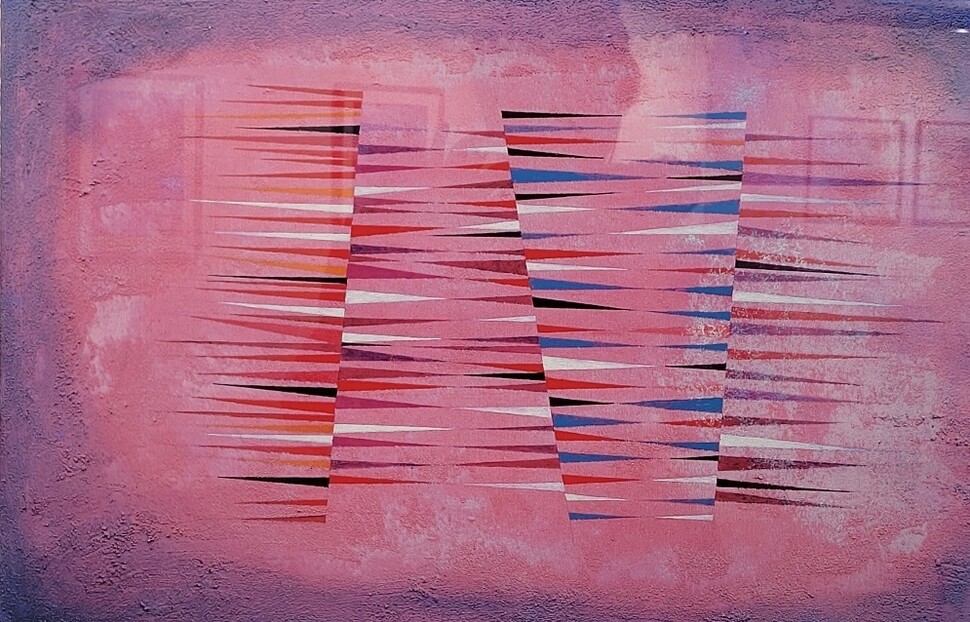
깃발이 나부끼는 듯한 느낌의 이신 박사의 그림. 이신 목사는 생전에 동학에 대한 논문을 쓰기도 했다. 사진 조현 기자
시대를 앞서간 고독한 예언자의 전시회가 열리고 있다.
화가이자 목사이자 신학자였던 이신 박사(본명·이만수 1927~1981)의 유고전이다. 지난 16일 시작돼 22일까지 서울 종로구 율곡로 24 4층 도화아트에서 열리는 이신 유고전은 ‘이신, SR@XR’란 이름으로 열린다. SR은 Surrealism(초현실주의)의 약어이고, XR은 eXtended Reality(확장 현실)의 약어다.
이신이 50~60년 전에 그린 그림의 상상력은 지금 생각해도 놀라울 정도다.초현실적으로 담겨진 지구와 인간의 절규가 리얼리즘이 된 현실에서 더욱 적확한 예언자의 울림이 아닐 수 없다.
이신은 10대때인 일제 강점기 중국에서 열린 중일 미술대전에 입선할 만큼 일찍부터 그림에 두각을 나타냈다. 그는 20대때 한국미술협회 전람회에 입선했고, 남부의 하버드로 꼽히던 밴드빌트대학 유학시절에 미국 네브라스카주 백주년기념미술전에 최고상을 수상했다.
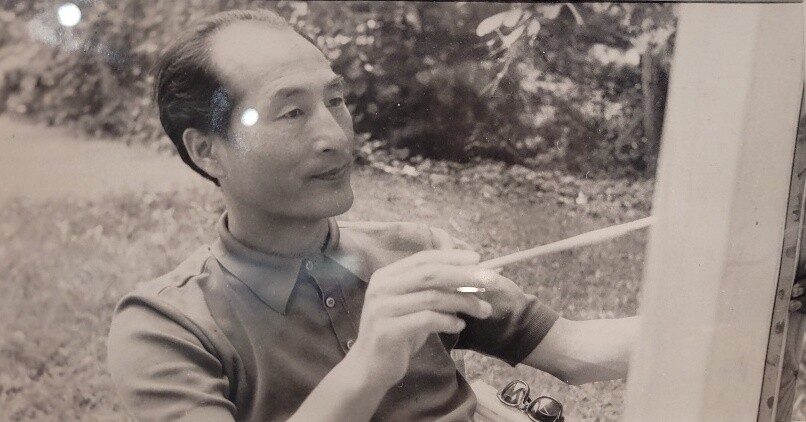
화가이자 목사이자 신학자였던 이신.
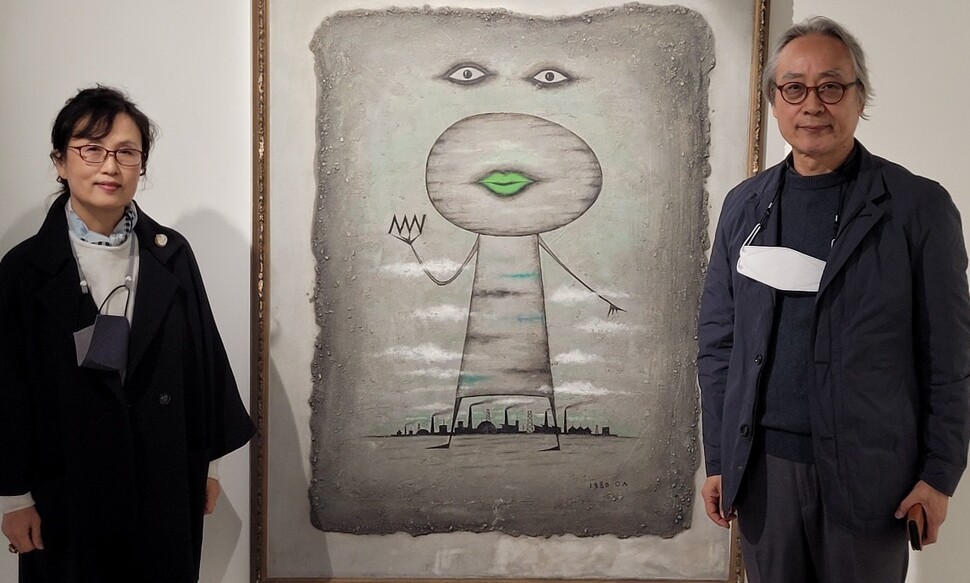
이신 박사의 전시회장을 지키고 있는 딸 이은선 세종대 명예교수(왼쪽)과 사위 이정배 전 감신대 교수 및 목사. 사진 조현 기자
그는 미국에서 고학을 하면서 그림을 그려 학비와 생활비를 마련하고, 고국의 아내와 자녀들까지 돌봐야했다.
전남 여수 돌산의 크리스천 집안에서 태어난 그는 일제 때 명문인 부산상고(당시 부산초량상업학교)를 졸업했다. 고교시절부터 부산시립도서관의 미술 관련 책을 모두 다 읽었을 정도로 그림에 심취했다.
상고 졸업 뒤 당시로는 최고의 직장으로 꼽혔던 은행에 취직했으나 그는 신학을 공부하기로 결정했다.
남들이 하나같이 말렸지만 그는 이미 결혼까지 한 몸임에도 돈벌이를 중단하고, 신학공부를 택했다.
해방 직후인 1946년 감신대에 입학해 1950년 6·25 직전에 감신대를 졸업하고, 충청도 전의에서 전도사 생활을 시작했다. 그러나 곧 6·25가 터지자 고향인 전라도로 돌아갔다. 그 때 전라도일대엔 ‘한국 그리스도교 교회 환원 운동’이 일어났다. 그 때부터 이미 한국 교회의 고질병이던모든 교파의 분열을 거두고 신약시대의 교회로 돌아가 외국 선교사의 입김으로부터 벗어나 한국적인 교회로서 일치하자는 성령 운동이었다.
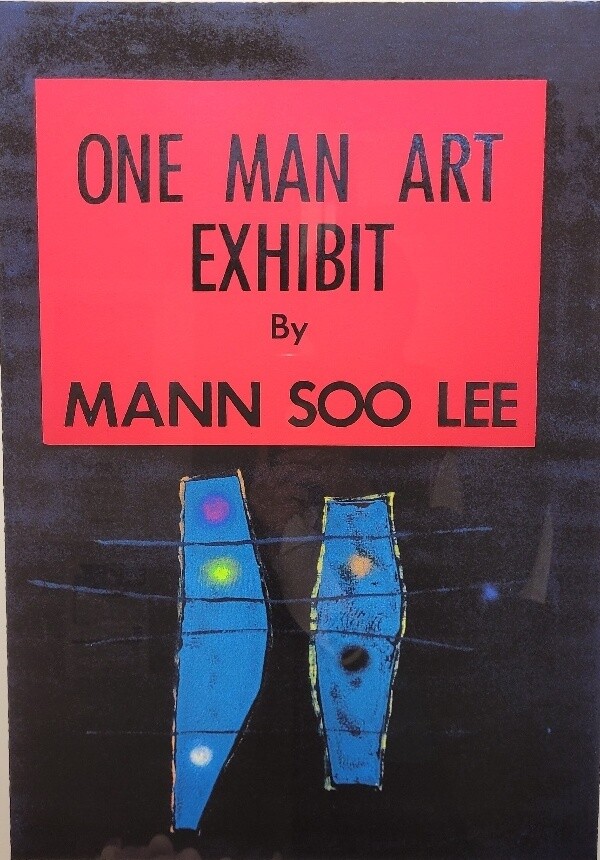
이신 박사가 미국 유학시절 열었던 전시회 포스트. 사진 조현 기자
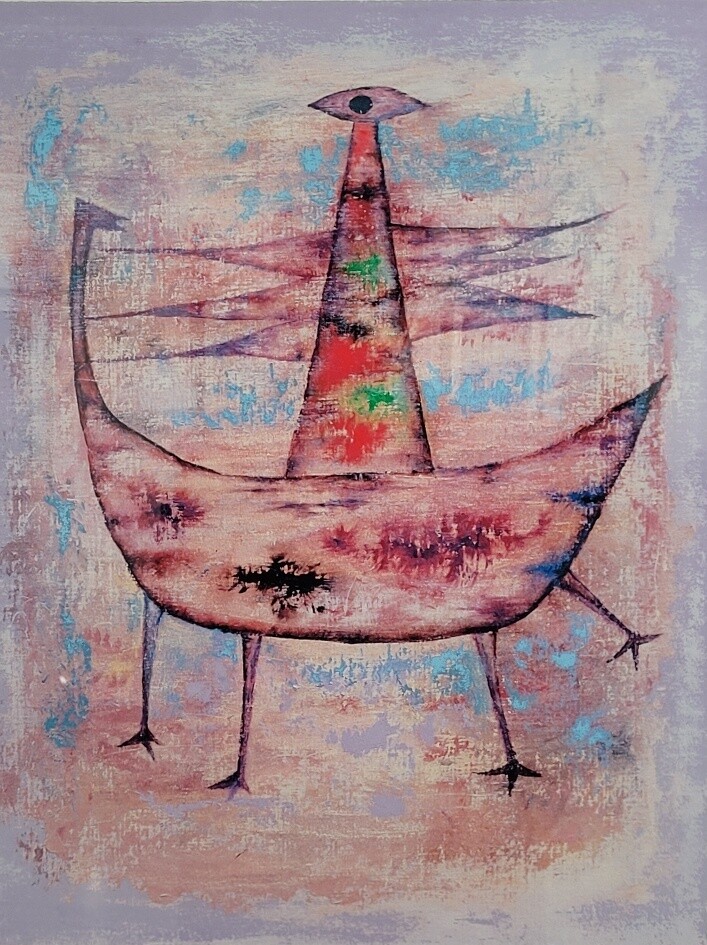
이신 박사의 그림. 사진 조현 기자
그가 ‘한국 그리스도교회’ 목사 안수를 받은 것은 51년이었다. 자신의 이름을 ‘오래 산다’는 뜻의 이만수(李萬壽)에서 ‘믿음’이라는 이신(李信)으로 고친 것도 그 때였다.
주류 교단을 두고, 그가 ‘한국 그리스도의 교회’ 목사 안수를 받음으로써 그의 ‘외로운’ 삶이 시작됐다.
서울과 충청도 일대의 작은 교회에서 목회 활동을 하던 이신은 40살이라는 늦깎이로 미국 유학길에 올랐다. 그곳에서 그림을 그려 학비를 조달하고 서울 명륜동 산동네에 두고 온 아내와 4남매의 생활까지 책임져야 하는 고달픈 유학생이었다.
이신의 미국유학은 눈물의 길이었다. 중3이던 맏딸이 뇌막염으로 숨을 거뒀지만 귀국도 못한채 이역만리에서 눈물을 삼켜야했다. 명문 밴더빌트 대학에서 박사 학위를 받고 71년 귀국했지만 주요 교단 소속이 아니던 그를 받아주는 곳은 없었다. 국내 어느 신학자도 따르기 어려울 만큼영어와 일어만이 아니라 히브리어, 헬라어까지 능통한 지성이었지만, 그는 주요 대학에 진출하지 못한 채 산동네 목회를 계속 해야 했다. 그는 산동네에서 정신박약아들을 모아 그림을 그리게하고, 글을 모르는 부녀자들에게 글을 가르쳤지만, 마을 사람들은 “미국에서 박사까지 따온 사람이 저게 뭐하는 짓이냐”고 비웃었다.
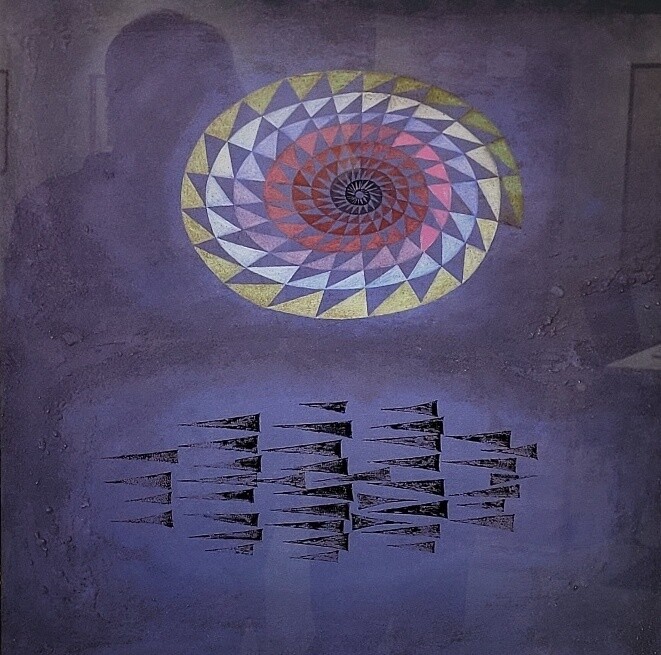
이신 박사의 그림. 사진 조현 기자
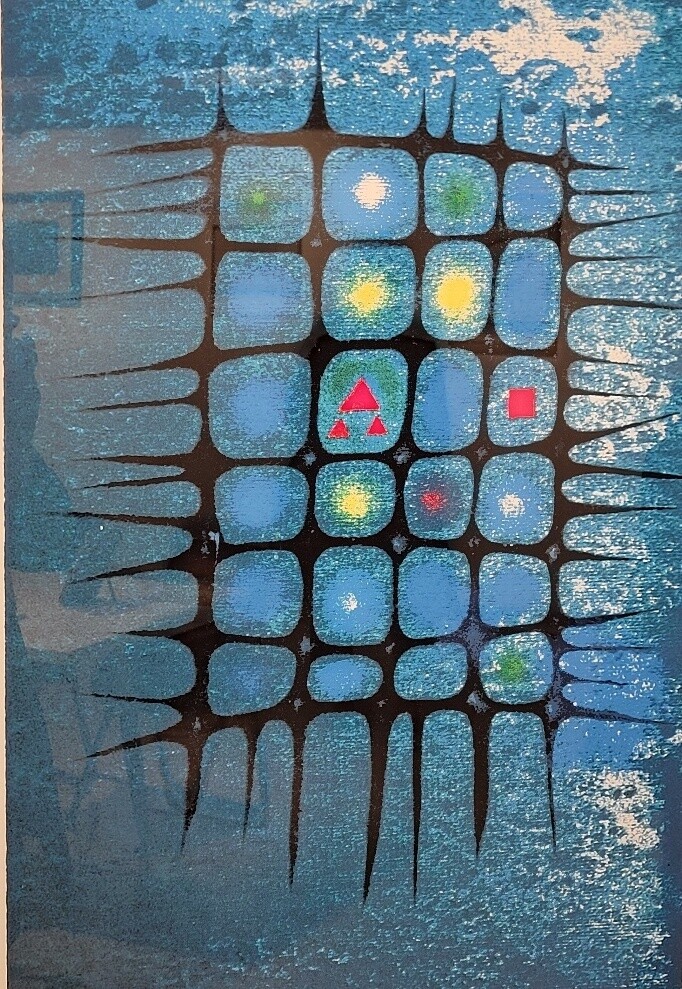
이신 박사의 그림. 사진 조현 기자
설상가상으로 75년엔 정부의 무허가 판자촌 철거 정책으로 오두막까지 헐려 그는 괴산의 산골교회로 떠났다. 그곳에서 이신은 손수 돌을 주워 아름다운 교회를 지었고, 새벽이면 냉수마찰을 한뒤 ‘육안으로는 보이지 않은 세계’를 화폭에 담았다. 해방 직후 은행원들 상당수가 적산가옥을 불하받아 큰돈을 챙기고, 한국전쟁 이후 영어에 능통한 목사들은 선교사들의 지원으로 누구보다 잘나갔고, 70년대 ‘미국박사’라면 금값을 주고 모셔갔지만,이신은 매번 부귀영화와 신앙의 갈림길에서 자신의 신념을 택했다. 죽는 것보다 못한 떳떳하지 못한 삶을 살지 않기 위해서였다.
이신의 둘째딸인 전 여신학자협희회장 이은선 세종대 명예교수(교육철학)는 “아버지는 어려운 삶 속에서도 자식들에게 그 무엇에도 얽매이지 말고 창조적으로 살다갈 것을 격려했다”고 회고한다. 이은선 교수의 남편인 이정배 감신대 교수는 스승인 전 감신대학장 변선환 교수와 그의 친구인 이신의 중매로 결혼했다. 그는 “결혼 전 장인이 돌아가시기 전 3번을 뵈었는데, ‘나는 민중신학자들보다 더 가난하게 살았네. 그러나 가난보다 더 힘든 것은 상상력의 결핍, 상상력의 부패지’라고 한말을 잊을 수 없다”고 말했다.
이신의 유적 이은화, 이은선, 이윤 이경은 이렇게 초대의 글을 썼다.

다 말라비틀어진 어머니의 젗을 빠는 듯한, 이신 박사의 그림. 사진 조현 기자
“상상력이 그 어느 때보다도 인간을 인간되게 하는 근원적 면모이자 능력으로 중요하게 인식되는 오늘날, 이신이 경고했던 ‘의식의 둔화’와 ‘상상력의 부패’는 우리에게 사실적 종말을 걱정하게 하는 여러 위기 상황을 이 세계에 초래하며, 우리는 이 위기를 극복할 ‘창조적인 이벤트 메이킹’으로서의 행이와 사건을 절실히 필요로 한다”
‘리좀-심은록 미술연구소 소장’인 심은록 동국대 겸임교수는 “이신은 선택한 시공간과 관점 하에서 중요한 신학이나 사상을 적용하여 현실에서는 실천 양식으로 삼고, 미술에서는 재현 방식으로 삼았다”며 “그는 초현실주의라는 시공간적 프레임을 선택하고, 거기에 묵시론적 관점과 니체의 초인 사상을 전개하여, 최고로 고양된 상상력을 실현했다”고 밝혔다.
지독한 가난과 소외 속에서도 결코 굴하지않고, 상상력과 창조력의 등불을 높이들었던 이신의 그림들은 우리가 문명의 톱니바퀴 속에서 뒹구는 티끌이 되어버린 것은 아닌지 자화상을 돌아보게 한다.
조현 종교전문기자 cho@hani.co.kr
원문보기:
https://www.hani.co.kr/arti/well/mind/1015993.html?fbclid=IwAR2miRyYQaIhKEPpArxiVqr71RjlTRc4OQvee0QPYDi5SyfkNZykvWbtRVM#csidxc7893d71159126cb023b1274d9ad817




























